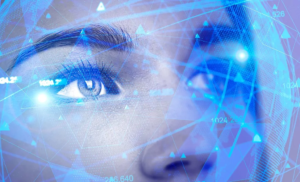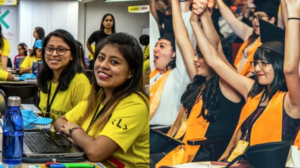OpenAI’s ChatGPT Vision (or GPT-4V) is creating a buzz in the artificial intelligence community. But what is it, and how can you tap into its potential to streamline and automate your business? In this overview, we’ll demystify ChatGPT Vision, discuss its strengths and limitations, and shed light on how to utilize it effectively.
Hire the best developers in Latin America. Get a free quote today!
Contact Us Today!ChatGPT Vision Spotlight
OpenAI is constantly enhancing its chatbot with innovative additions. Understanding ChatGPT Vision Beyond the catchy news titles, ChatGPT Vision isn’t a system that sees as humans do. It’s an AI chatbot equipped with a unique feature: image interpretation. Picture it as a digital era’s visual detective.
Social media has been abuzz about the things you can do with ChatGPT Vision. From creating a web app by merely uploading a Figma screenshot:
To Suggesting recipes by simply snapping a picture of your refrigerator’s content:
How does it do it?
While the headlines might be sensationalized, ChatGPT Vision isn’t a robot that sees like a human.
The underlying technology that allows ChatGPT Vision to process and understand images is built upon a combination of techniques from computer vision, deep learning, and natural language processing. Here’s a technical breakdown:
- Computer Vision & Deep Learning:
- Feature Extraction: Images are represented as arrays of pixel values. For an untrained observer, this is just a massive list of numbers, but for a machine learning model, especially convolutional neural networks (CNNs), these pixel values are inputs that can be processed to detect patterns, edges, textures, colors, and other visual features.
- Object Detection: Certain architectures of CNNs, such as YOLO (You Only Look Once) and SSD (Single Shot Multibox Detector), can identify multiple objects within an image by drawing bounding boxes around them. This is more than just feature extraction; it’s recognizing and localizing objects.
- Image Classification: Models like ResNet, VGG, and MobileNet can label an entire image based on its primary content. For instance, recognizing an image as containing a cat or a dog.
- Semantic Segmentation: Some models can classify each pixel of an image into a category, which helps in understanding the image at a very granular level.
- Optical Character Recognition (OCR):
- If there’s a need to extract text from images, OCR technologies come into play. OCR converts images of typed or handwritten text into machine-encoded text. Under the hood, OCR models might also use deep learning, but their training and architecture are specialized for recognizing characters and words in a variety of fonts and backgrounds.
- There are popular OCR libraries like Tesseract which are widely used, but there are also deep learning-based methods that can achieve even better accuracy, especially in challenging conditions.
- Combining Vision and Language:
- Once objects, features, or text are extracted from an image, it’s often important to combine this information with natural language processing (NLP) techniques. This helps in generating descriptions, answering questions about the image, or even translating the detected text.
- Models like OpenAI’s CLIP (Contrastive Language–Image Pre-training) are trained on a large number of images and their descriptions, allowing them to understand images in the context of natural language queries.
- Differentiating Between Text, Pixels, and Visual Objects:
- At the basic level, everything in an image is just pixels. However, deep learning models can learn the patterns that differentiate objects from the background, text from non-text regions, and so on.
- For instance, the patterns of pixels that typically represent text (straight lines, curves of letters, spacing between characters) are different from the patterns of pixels that represent natural objects. Models trained for OCR will thus specialize in recognizing these text-like patterns.
How can ChatGPT Vision help your business?
For tech businesses, especially those in the SaaS, Digital Business world, GPT4-V can offer a range of opportunities to innovate and enhance their offerings. Here’s how they can leverage these capabilities:
- Customer Support & Troubleshooting:
- Users can send screenshots or photos of issues they’re encountering. ChatGPT Vision can recognize common errors, interface elements, or problematic configurations and guide users toward a solution.
- UI/UX Feedback:
- Founders can gather visual feedback on their software interfaces. Users can submit screenshots, and the chatbot can analyze common points of confusion or suggest design improvements based on patterns it recognizes.
- Founders can gather visual feedback on their software interfaces. Users can submit screenshots, and the chatbot can analyze common points of confusion or suggest design improvements based on patterns it recognizes.
- Documentation Assistance:
- Instead of scrolling through long FAQs, users can snap a picture of the part of the software they’re struggling with. ChatGPT Vision can then provide relevant documentation or tutorial links.
- Feature Onboarding:
- As new features are rolled out, users can interact with the chatbot using screenshots to get personalized walkthroughs, ensuring they understand and adopt new functionalities.
- Competitor Analysis:
- By feeding the chatbot screenshots of competitor software, SaaS founders can get insights into design trends, feature commonalities, or potential areas for differentiation.
The Impact on Digital Businesses
It’s tough to predict what’s just a passing trend in AI and what’s here to stay. While some ChatGPT updates got a lot of buzz but then faded, things look different with the latest visual features.
OpenAI is working on better image tools, like an updated Dall-E 3, and they’re planning to add it to ChatGPT. And with companies like Google possibly adding visual features to their chatbots, this might not just be a fleeting trend. It feels like we’re at the beginning of something big in how businesses use AI.




